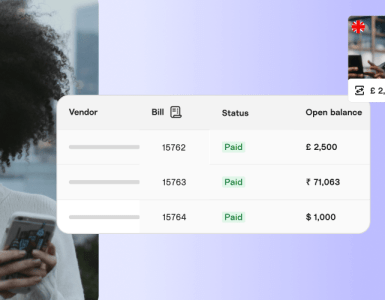Once the mainstay of children’s cartoons, animation has become a weighty genre in itself in media today. The technological boost to the industry has helped it devise new ways of making imaginations come alive. Films, series, and gaming visuals are using new techniques to produce stunning visual content.
Animation is a multi-billion dollar industry, spanning several sub-genres, and has spurred the need for talented animators to fill the growing demand. So, what should you do to start your animation career and get noticed? This guide will look at how you can boost your animation portfolio, increase your rates and close more clients.
Let’s dive in!
5 Types Of Animation Projects To Power Up Your Portfolio
The animation industry has exploded in recent times and has gone far beyond children’s films and gaming. There are now many different animation styles, which can be incorporated into a wide variety of different projects.
But as an animator, how can you convince clients to hire you as a freelancer and make the most of this boom in the genre?
Let’s start with the first thing most clients will see: your animation portfolio. In this section, we will look at the five types of projects that will give your portfolio a boost.
1. 3D Animation Project
3D animation or computer-generated imagery (CGI) made The Avengers a cash cow for Marvel and is one of the reasons behind Disney’s continued success. Hugely popular and very lucrative, 3D animation is a must in your portfolio. It brings alive digital characters and locations in a life-like manner.
Other than animated films, CGI is also used in gaming and to complement live-action films such as the reboot of Mulan. The demand for animation has shot up with film, games, and even television series using 3D to power their visuals.
It is a highly specialized process and requires hours to perfect even a single frame. Usually, a team of people will work on a project. You can include short 3D animation clips to showcase your work and range. Some animators pick a niche such as anime, gaming visuals, or children’s entertainment. Take inspiration from animator Jack Lee (image above), who has picked the hugely popular anime genre to highlight his skills.
2. Traditional Animation
Before digital visual effects and CGI took over most animation films, we had traditional animation or hand-drawn animation for most of the 20th century. It gave us films like the original Lion King and the early Disney fairytales. In traditional animation, each frame is first drawn by hand, creating the illusion of a moving picture when everything is put together.
Traditional animation (also known as frame-by-frame animation) is going back to basics and shows your range as an animator. Despite being the oldest form of animation, it is a complex and laborious process. It also calls upon your skills to make the characters as real as possible without using computer-drawn images.
3. 2D Vector-Based Animation
2D vector-based animation is the technology behind the iconic Bugs Bunny cartoon. If you think this form of animation is no longer popular, think again. Popular 2D animation show Rick and Morty is still on the air and gaining more fans.
2D animation, as the name suggests, draws the character only in two dimensions, with each scene drawn by hand before it can be captured digitally for the screens. It is used in both films and series. For example, the famous Loving Vincent film uses painters who recreated Vincent Van Gogh’s famous works for each scene. You can see how this scene’s look is inspired by his painting “The Cafe Night” in the image above.
4. Stop Motion Animation
Stop motion animation manipulates real-world objects such as small models of the characters, which are slightly moved and then photographed one frame at a time. When taken together, these frames then create an illusion of motion or movement.
Think of a flipbook and replace the drawings with a real object. It is primarily a film-making technique and has been used widely, most recently in Netflix’s The Little Prince (image below). The film uses puppets made out of paper to bring the scene alive. Read how the team used paper puppets to shoot this New York Times article on how they used stop motions and paper cut-outs for this film.
Other famous examples of stop-motion animation include the Wallace and Gromit cartoons and Tim Burton’s The Nightmare Before Christmas.
One of the things that separate stop motion from the other forms of animation is that each frame has to be perfect. If you make a mistake in one frame, you usually have to go back to the first frame and start all over again, unlike other forms where you can simply redraw the frame. It is an intensive and painstaking form of animation and one that is likely to get you noticed by clients.
5. Motion Graphics
Motion graphics use animation and digital footage to create an illusion of movement and are usually accompanied by audio. They focus on presenting moving text logos and tie up presentations that make the basis of explainer videos, TV productions like the news and commercials, and sporting events.
Motion graphics usually stay away from character animation but are guided by the same principles. Motion graphics cover a broad range of skills and, unlike other forms of animation, have a wider potential use and increase your chances of closing clients.
Most projects today require different skills and are rarely made entirely in one form of animation. Having different skills in your animation portfolio gives you access to a broader range of clients. In addition to this, collaboration with peers will allow you to create exciting projects that will enhance your portfolio as well as building industry connections.
In the next section, we will look at how you can leverage your portfolio and connections to close more clients.
4 Tips On Closing More Clients For Animation Projects
Even with a diverse portfolio, it can be challenging to get the right projects and add more clients to your portfolio. That’s because animation is a highly competitive field. This section will look at tips that will help you close more clients for your animation projects.
1. Build A Solid Portfolio
Most animators make a showreel that highlights their strengths and best work. As we discussed earlier, make sure that your reel has examples from as many of the five main types of animation as possible. Organize your work by category so your prospects can find things at a glance.
Make sure you keep adding more work to your portfolio as you gain more skills. That will show that you’re continually learning and keeping your skills up to date.]
After you have created a strong portfolio, choose a reliable hosting site. Your prospective clients will likely not return if your portfolio fails to load. Many animators use their Instagram and YouTube accounts as an effective way to show their work. Online portfolio sites like Behance (image above) can also help you create reliable portfolios.
2. Reach Out To Potential Clients
After you have a portfolio in place, reach out to potential clients with cold emails (emails sent without any prior contact). Ensure you include a short bio in the email body, have a professional email address, and include the link to your portfolio. If they have advertised for a job, tailor your mail according to their requirements. If not, remember to focus on what you can do for them. They don’t know you, so give them a reason to care!
Cold emails do not mean sending multiple emails from a copy-and-paste template. Here is where you can stand out. Find out who the hiring manager or point person for the project or relevant department is, and then send an email addressed to them personally. LinkedIn and the company page can help you here.
3. Build A Solid Proposal
You passed the cold email test and heard back from the prospective client. Now what? You have to create a proposal that will outline the project’s details from the storyline to the deadlines. A timeline also helps you keep track of your progress. If the project has a lot of moving parts, using project management tools can help you deliver your project on time.
Begin by understanding who the key audience is and use that to create an outline for the project. For example, if the project is for a commercial, it will need a strong call to action. Next, use your technical ability to tell a story in your proposal. Clients want to know how you can help them and what you can offer. Use this framework to craft an irresistible proposal.
Manage all your digital agreements with document management solutions such as DocuSign alternatives to ensure that you and the client are on the same page.
4. Share Customer Testimonials
Nothing inspires more trust in a potential client than a recommendation from another happy client. Use testimonials to highlight the value of your work and to showcase your experience in the industry.
Testimonials help you back up your claims and give you more credibility. Your clients are more likely to trust the word of a peer than just rely on your pitch. Referrals have proven to be a powerful marketing tool, so don’t be afraid to ask satisfied clients to put in a good word from you.
Closing Customers Like A Pro
In the age of studios and big animation houses, it can be challenging to get an audience for your work as a freelance animator, but a few key steps can help you attract clients. The first step to getting noticed is to create a solid animation portfolio that showcases your expertise in the different forms of animation. This will help you reach out to potential clients.
Next, build detailed and precise proposals that outline every aspect of the project. It’s best to set up your winning proposal template and just tailor the client and project-related bits when it’s time to send it. Ensure that you add customer testimonials to your pitch to add credibility to your project.
Once you’ve landed the job, all you have to do is create an amazing project! Manage your time effectively, and keep a line of communication open with your clients. Oh, and check out some of our favorite work from home tips to help you get the most out of the freelance life.
Looking to find paid work as a freelancer? Sign up to Twine and pitch on a varied range of animation projects each week.
Once your project is underway, streamline the revision process with ReviewStudio; an advanced proofing application that allows you to add detailed revision notes to each draft of a project.








